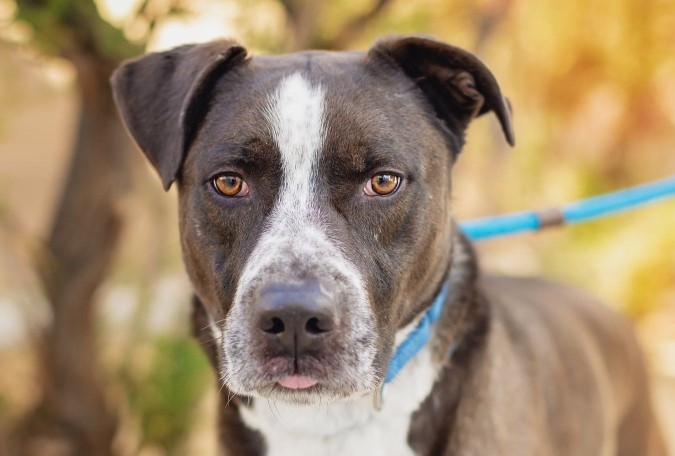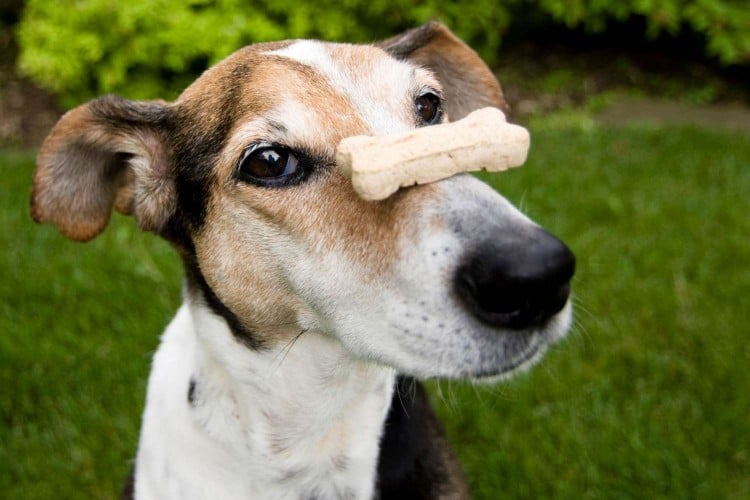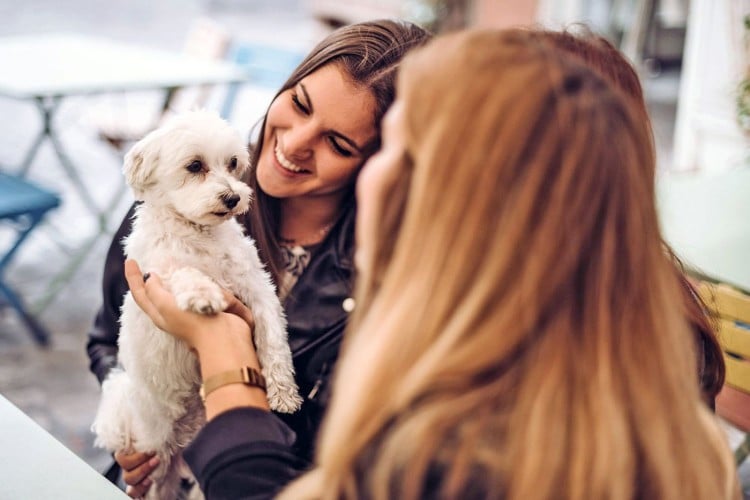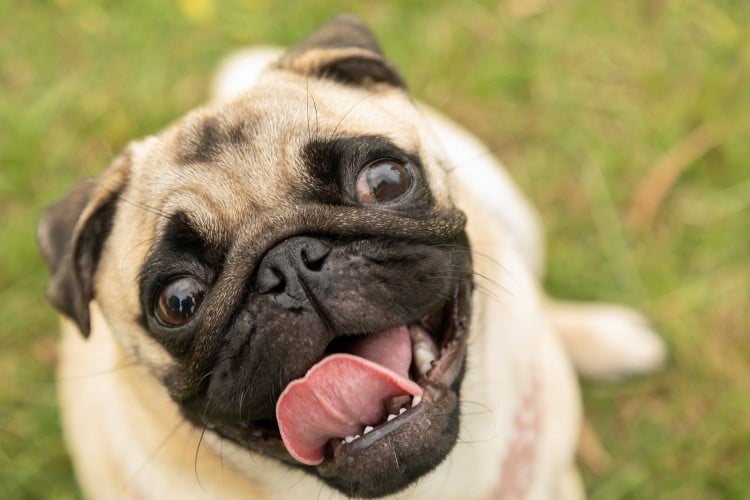Putting on Your Dog's Harness Doesn't Have To Be Hard—Here's How
We independently evaluate all recommended products and services. If you click on links we provide, we may receive compensation. Learn more.
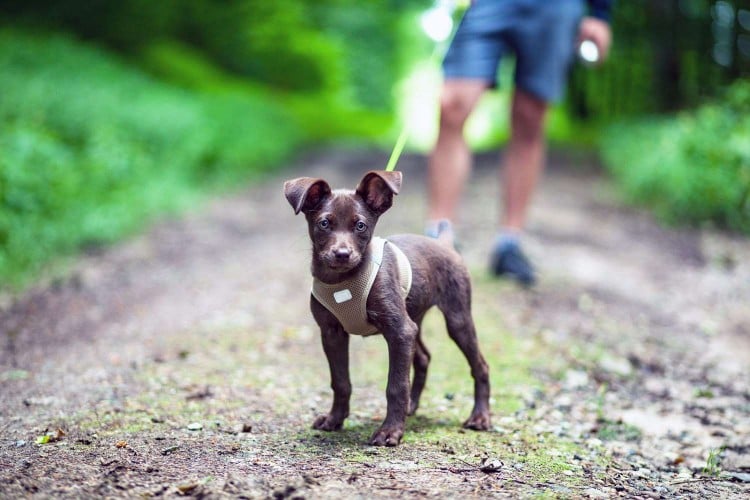
Dogs need daily walkies to ensure they are happy and healthy. Putting on a harness is one way to make those daily treks more enjoyable. Because your leash attaches to the harness between your dog's shoulders or at his chest, using a harness reduces the kind of leash-pulling that can choke a dog or hurt his neck. Any dog can benefit from walking with a well-fitted harness, but especially dogs that are likely to pull or have difficulty breathing during exercise (like brachycephalic breeds).
Don't be put off by all the snaps and straps! Once you understand how to select and put on a dog harness, it becomes an easy-peasy tool that will benefit both you and Fido.
Our Favorite Dog Harnesses That Make Walks More Enjoyable for Both You and Your Pup
How to Measure a Dog for a Harness
First things first: You have to know how to find a good fit! A good harness should be easily adjustable and should be purchased according to your dog's measurements.
Most harnesses will come in sizes small through extra large. It will be easier for you to pick a size if you know your dog's weight and body measurements. Most harnesses will come with fit guides that help you measure your dog properly.
Step 1: Measure your dog's girth, about 2 inches from their elbow.
Step 2: Measure your dog's neck, slightly lower than you would for a normal collar.
Step 3: Select the size of the harness based on your measurements and weight. Be sure there is a little room for adjustments.
How to Put On Common Types of Dog Harnesses
If you've already shopped for a dog harness you know there's a large variety to choose from. The way you put the harness on your dog will vary by type. Not all types are suitable for all dogs. And as with any new training tool, a harness should be used in combination with a positive reinforcement training program.
Harnesses will include either one or two D-rings (where you attach the leash) and buckled straps that help you adjust the harness to fit your dog. Pay attention to the location of the D-ring, as it will indicate the type of harness.
Step-In Harness
A step-in type harness will include only one D-ring, located on the back. Your dog will need to step into the harness (both front paws) so that you can connect the two sides (with the buckle) on your dog's back. This type often has a padded chest area making them a good option for small breeds, for puppies, or for times when you're walking fast, short distances—like from the car to the veterinary office.
Front-Clip Harness
Often sold as a "no pull harness" these harnesses may be best avoided because they restrict shoulder movement and a dog's natural gait, making them uncomfortable and unsuitable for daily walks. Many front-clip harnesses have color-coded straps to help fitting. For most front-clip harnesses, the collar loop (the area that goes around the neck) will be a different color than the body straps. The D-ring goes in front, on your dog's chest. Place that part of the harness on your dog's chest first, and then connect the straps under your dog's belly area.
The Best Leashes for Dogs That Pull, According to a Dog Trainer
Back-Clip Harness
These are likely to be your go-to for walks and hikes. You may find this a good option for a puppy that is learning to walk on a leash as well as dogs that have neck sensitivities or are more prone to pull when they're overly excited. Back-clip harnesses will have a D-ring on the back—between your dog's shoulders. To put on this type, start by putting the smaller loop over your dog's head, so it sits like a collar. Then have your dog step through the other loops. Adjust the fit by tightening or loosening the straps through the sliders.
Dual-Ring Harness
There are a few brands that sell harnesses with D-rings on both the chest and the back. The Balance harness is one example of this type and it's my ideal harness because it's suitable for pretty much any dog and for everyday use. This type of harness can help cut down on pulling while still ensuring your dog has full shoulder and body motion. It's also very adjustable, which works well for dogs with heavy coats or breeds that are long and thin. It has a brightly colored strap that goes down the dog's back, connecting two loops: a collar loop and the body loop. Put the collar loop on first, then reach around your dog to buckle the body loop straps.
How Should a Dog Harness Fit?
With any type of harness, you'll need to adjust the straps to get the optimal fit. A proper harness fit should be snug but never pinch. You should be able to fit two fingers between your dog and the harness at any point.
A harness that is too loose or too tight can cause injury and discomfort to your dog. If you are having trouble fitting your harness don't hesitate to ask your vet or a positive reinforcement-based trainer to help you.
How to Help Your Dog Enjoy a Harness
Dogs aren't born understanding how to wear a collar or a body harness. For some dogs, putting on something that clings to their body can be really nerve wrecking. Don't force your dog to wear a harness before you create a solid, positive association with it. To get started, try these tips.
- The moment you get out the harness, provide your dog lots of tasty treats they adore. Let them sniff and investigate, giving treats.
- Lift up the harness and put your arm through the collar loop. Give your dog lots of treats as you buckle and unbuckle the harness, getting them used to the sound.
- While standing or kneeling next to your dog, place the collar loop on your dog while you continuously give them treats. Remove it, then back on, treating each time.
- If your dog still is enjoying the activity, you can put the collar loop on him and then buckle the straps, giving more treats. If he still appears to be having fun, go ahead and let him walk around the house with the harness on for a few minutes.
- Once he enjoys wearing the harness, you can clip your leash to it and walk around your house, your yard, and then down the block. Always provide lots of treats as your dog gets accustomed to walking with the harness.
Sometimes people consider a harness because they are having difficulty getting their dog to walk nicely on a leash. If that's your situation, help from a positive reinforcement trainer can really help you and your dog get that walking thing down pat. Don't hesitate to ask for a private lesson so you and your dog can learn to love walks together.

